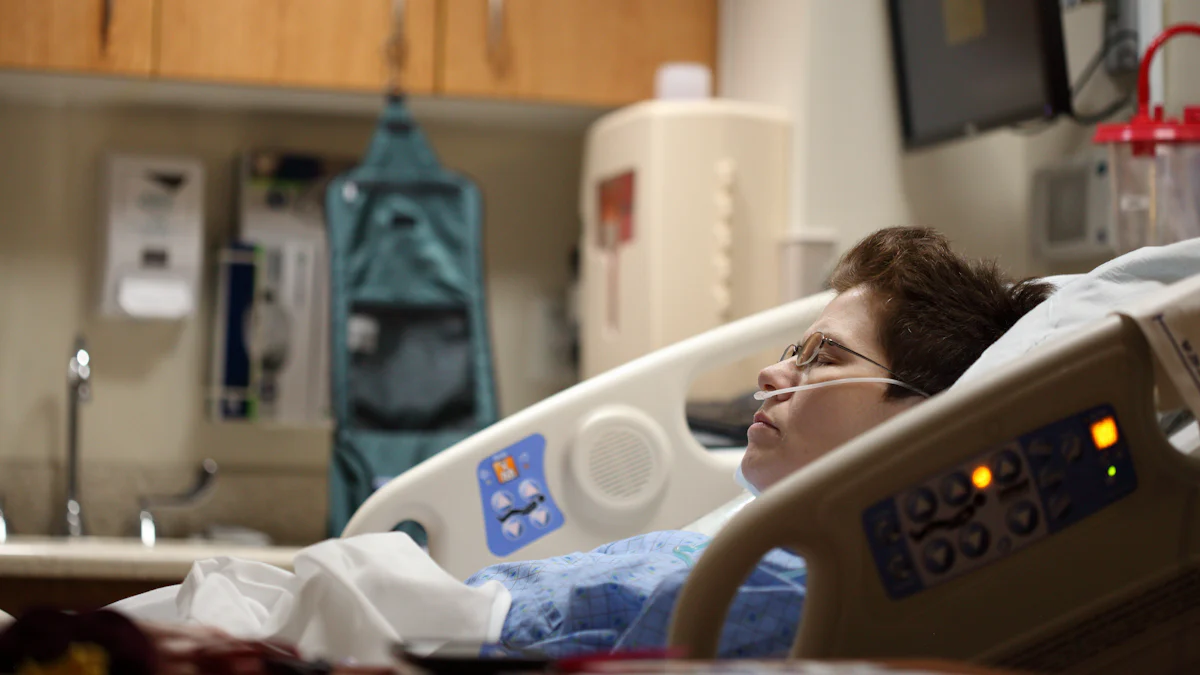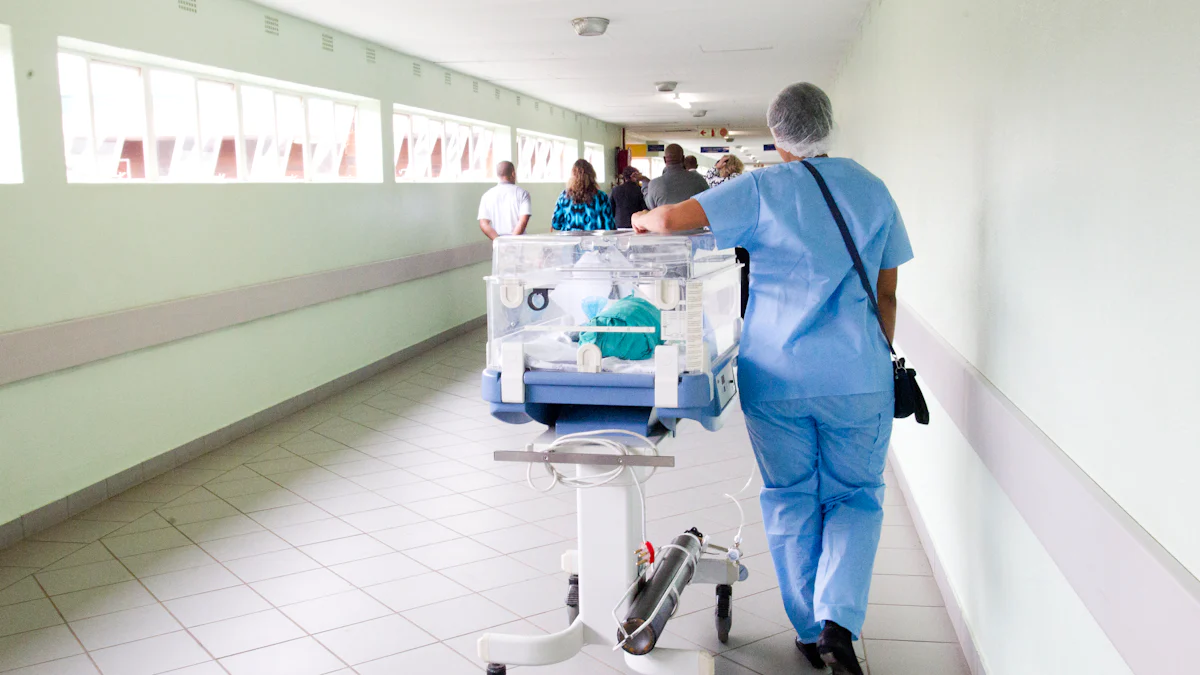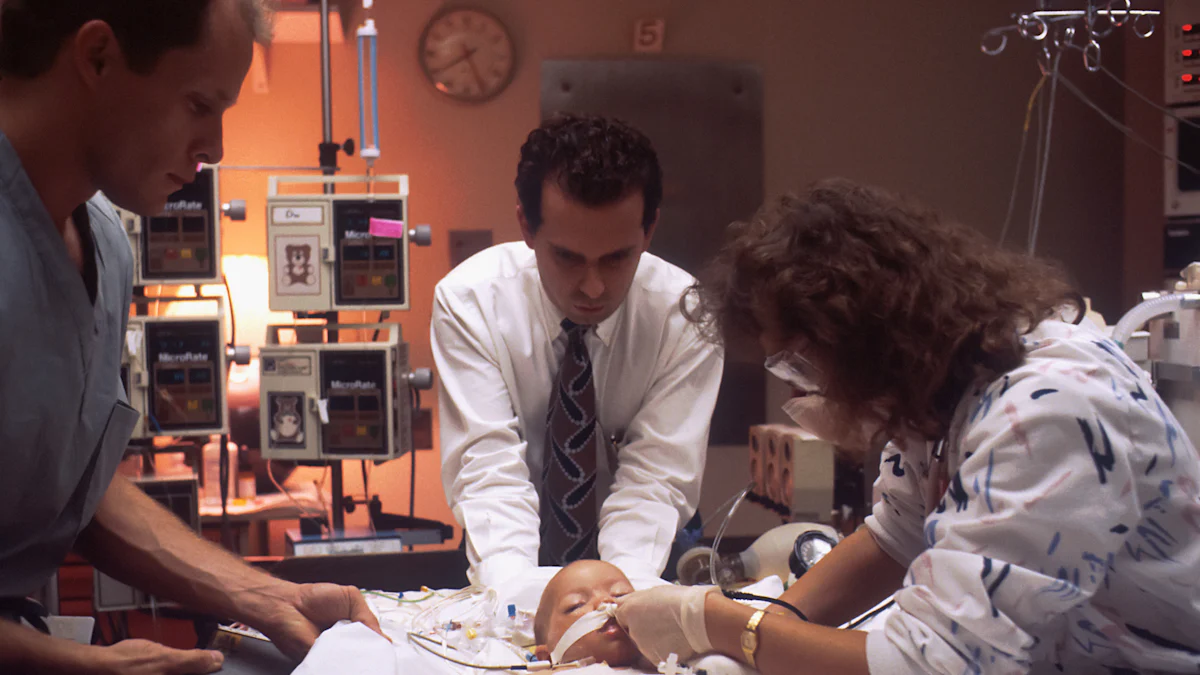Why Are Community Diagnostic Centres NHS Important?

Community Diagnostic Centres NHS play a crucial role in improving healthcare access. You no longer need to endure long waits for diagnostic tests. At the end of October 2022, over 426,000 patients in England waited six weeks or more for tests, far exceeding the NHS standard of less than 1%. These centres reduce delays by offering faster services outside hospitals. They also improve outcomes. For example, patients receiving a clear management plan increased by 15% when using these centres. By bringing diagnostics closer to you, they enhance convenience and ensure timely care.
Key Takeaways
Community Diagnostic Centres NHS give quicker access to medical tests. They cut down waiting times compared to regular hospitals.
These centres help find illnesses early, leading to better health. Early treatment for diseases like cancer and heart problems is possible.
Built in easy-to-reach places, these centres save patients from long trips to get care.
They reduce the load on hospitals, allowing better use of resources. This makes healthcare work more smoothly.
Community Diagnostic Centres NHS help fix unfair health gaps. They provide services in areas with fewer options, so everyone gets needed tests.
What Are Community Diagnostic Centres NHS?
Definition and Purpose
Standalone facilities for diagnostic services
Community Diagnostic Centres NHS are standalone facilities designed to improve access to diagnostic services. According to NHS guidelines, these centres aim to enhance population health outcomes by offering quicker and more accessible diagnostic services within the community. They are independent of hospitals and focus solely on diagnostics, which helps reduce the burden on secondary care services. By providing these services closer to where you live, they make healthcare more convenient and efficient.
Types of tests and scans offered
These centres offer a wide range of diagnostic tests and scans. You can access services such as blood tests, X-rays, CT scans, MRI scans, and ultrasound scans. Some centres also provide more specialised tests, including endoscopy and cardiology diagnostics. This variety ensures that you can receive the necessary tests in one location, saving you time and effort.
How CDCs Work
Co-ordinating diagnostic tests under one roof
Community Diagnostic Centres NHS streamline the diagnostic process by co-ordinating multiple tests under one roof. This approach involves collaborative working between trusts, redesigning diagnostic pathways, and integrating existing systems. For example, sophisticated data architecture connects systems like RIS, PACS, and EPR across trusts. Clinically led designs ensure that services such as radiology and imaging meet the needs of healthcare professionals. These efforts optimise patient pathways, improving access and reducing waiting times.
"Working with Answer Digital as our delivery partner, we developed a sophisticated data architecture to join up all of our existing systems (RIS, PACS, EPR) at our two trusts."
Providing care closer to home
Community Diagnostic Centres are strategically located in accessible areas, such as high streets and retail zones. This placement allows you to access diagnostic services without needing to travel to a hospital. The independent report, ‘Diagnostics: Recovery and Renewal’, highlights how these centres bring care closer to home, supporting earlier diagnosis and reducing delays. By offering services in your community, they make healthcare more convenient and accessible.
The Role of Community Diagnostic Centres NHS

Supporting Early Diagnosis
Importance of early detection for better outcomes
Early diagnosis plays a vital role in improving health outcomes. When conditions are identified at an early stage, you have a better chance of receiving timely treatment, which can prevent complications and improve survival rates. For example, detecting cancer early often allows for less invasive treatments and higher success rates. Community Diagnostic Centres NHS make this possible by offering quick and accessible diagnostic services. These centres help you avoid delays, ensuring that you receive the care you need when it matters most.
Examples of conditions diagnosed early through CDCs
Community Diagnostic Centres NHS have proven effective in diagnosing a range of conditions early. They help identify cancers, heart diseases, and respiratory illnesses before symptoms worsen. For instance, a simple CT scan at a CDC can detect lung abnormalities, while blood tests can reveal early signs of diabetes. By providing these services in your community, these centres empower you to take control of your health and improve your quality of life.
Reducing Hospital Pressures
Shifting diagnostic services out of acute hospitals
Community Diagnostic Centres NHS reduce the strain on hospitals by shifting diagnostic services to standalone facilities. This approach allows hospitals to focus on critical care and emergency cases. In April 2022, 73 centres were operational, delivering 30,000 additional tests weekly. By September 2022, 92 centres had conducted 1.7 million tests, checks, and scans. This shift not only improves efficiency but also ensures that you receive faster diagnostic services without the need to visit a hospital.
Freeing up resources for critical care
By handling diagnostic services, Community Diagnostic Centres NHS free up valuable hospital resources. Hospitals can allocate more staff and equipment to critical care, improving outcomes for patients with severe conditions. These centres also reduce hospitalisation rates by providing timely diagnoses, which can prevent the need for inpatient care. This cost-effective model benefits both you and the healthcare system, ensuring that resources are used where they are needed most.
Date | Number of Centres | Additional Tests per Week | Total Tests Delivered |
|---|---|---|---|
April 2022 | 73 | 30,000 | N/A |
September 2022 | 92 | N/A | 1.7 million |
Addressing Health Inequalities
Improving access in underserved areas
Community Diagnostic Centres NHS improve access to healthcare in underserved areas. These centres are strategically located in high streets and retail zones, reducing travel requirements for you. They also offer better parking options and physical accessibility. This makes it easier for you to attend appointments, especially if you live in a rural or low-income area. By bringing diagnostic services closer to your home, these centres address barriers that may have previously prevented you from seeking care.
Reducing disparities in healthcare delivery
Community Diagnostic Centres NHS play a key role in reducing healthcare disparities. Patients from low-socioeconomic backgrounds often face challenges such as long travel distances and high costs. These centres mitigate these issues by offering localised services. Tailored planning ensures that CDCs are established in areas where they are most needed. This equitable approach ensures that everyone, regardless of their background, has access to timely and effective diagnostic services.
Benefits of Community Diagnostic Centres NHS

Faster and More Accurate Diagnosis
Shorter waiting times for tests and results
Community Diagnostic Centres NHS significantly reduce waiting times for diagnostic tests. On average, you can expect results much faster compared to traditional hospital settings. For instance, a study by Pallan et al (2005) found that the mean waiting time for tests at a Community Diagnostic Centre was 17.44 days, compared to 44.53 days in hospitals. This efficiency ensures you receive timely care, which is crucial for managing health conditions effectively.
Study | Setting | Mean Waiting Time | Comparison |
|---|---|---|---|
Pallan et al (2005) | Community Diagnostic Centre | 17.44 days | Shorter than hospital (44.53 days) |
Impact on patient anxiety and treatment timelines
Faster diagnosis not only improves treatment timelines but also reduces anxiety. Knowing your results sooner allows you to plan your next steps without prolonged uncertainty. Research highlights this impact. For example, Nixon et al (2020) reported that the time from initial assessment to lymphoma diagnosis was reduced to 16 days in rapid diagnostic centres, compared to 28 days in traditional settings. This quicker turnaround helps you start treatment earlier, improving outcomes and peace of mind.
Study | Findings | Wait Time Comparison |
|---|---|---|
Nixon et al (2020) | Time from initial assessment to lymphoma diagnosis | 16 days (LRDC) vs 28 days (historical controls) |
Convenience for Patients
Localised services closer to communities
Community Diagnostic Centres NHS bring services closer to where you live. These centres are often located in accessible areas such as high streets or retail zones. This proximity saves you time and effort, making it easier to attend appointments. A recent survey found that patients appreciated the convenience of having diagnostic services nearby, with 87% reporting a positive experience.
Reduced need for hospital visits
By offering a wide range of diagnostic tests under one roof, these centres reduce your need to visit hospitals. This not only saves you travel time but also minimises exposure to crowded hospital environments. Services like X-rays, CT scans, and blood tests are available locally, ensuring you can complete your diagnostics in a single visit.
Benefit | Description |
|---|---|
Patients can receive diagnostic tests more rapidly. | |
Reduced waiting times | Patients experience shorter waiting periods for their tests. |
Services closer to home | Diagnostic services are located nearer to patients' residences. |
Improved NHS Efficiency
Alleviating diagnostic backlogs
Community Diagnostic Centres NHS play a vital role in addressing diagnostic backlogs. The percentage of patients waiting longer than eight weeks for diagnostics in Wales rose from 10.8% in March 2020 to 41.5% in August 2022. By establishing these centres, the NHS has been able to provide quicker access to tests such as X-rays and scans, helping to reduce these delays. Patients have reported faster services, with many appreciating the speed and efficiency of CDCs.
The percentage of patients waiting longer than eight weeks for diagnostics in Wales increased from 10.8% in March 2020 to 41.5% in August 2022.
Patients reported quicker access to tests such as X-rays and scans due to CDCs.
87% of surveyed patients had a positive experience, appreciating the speed and convenience of the service.
Enhancing resource allocation and patient outcomes
These centres improve NHS efficiency by increasing diagnostic capacity and reducing waiting times. They also allow hospitals to focus on critical care by handling routine diagnostics. A recent report revealed that CDCs are providing around 7 million tests annually, with plans to expand this number. This approach ensures better health outcomes for you and a more sustainable healthcare system.
Key Findings | Description |
|---|---|
Increased Diagnostic Capacity | CDCs provide additional diagnostic service capacity in the system. |
Reduced Waiting Times | They help in reducing patient waiting times significantly. |
Patient Choice | Patients have more options for appointment scheduling. |
Services Closer to Home | CDCs are strategically located to offer services nearer to patients' residences. |
Integrated IT System | A fully integrated IT system ensures efficient patient flow from referral to discharge. |
Why Community Diagnostic Centres NHS Are Crucial for the Future
Meeting the Needs of an Ageing Population
Rising demand for diagnostic services
The ageing population in the UK has led to a significant increase in the demand for diagnostic services. As you age, the likelihood of developing chronic conditions such as heart disease, diabetes, or cancer rises. Early detection becomes essential for managing these conditions effectively. Community Diagnostic Centres address this growing need by offering accessible and efficient diagnostic services. These centres are designed to handle the increasing volume of tests required to support an ageing population, ensuring you receive timely care.
Tailored care for older patients
Older patients often face challenges when accessing healthcare, such as mobility issues or long travel distances. Community Diagnostic Centres provide a solution by offering services closer to your home. Historically, diagnostic care was limited to acute hospitals, which were not always accessible for older individuals. Now, these centres are strategically located in community settings, making it easier for you to attend appointments. This shift aligns with the NHS Long Term Plan, which aims to deliver more care outside of major hospitals. By reducing travel and improving accessibility, these centres cater specifically to the needs of older patients.
Supporting Post-Pandemic Recovery
Tackling diagnostic backlogs from COVID-19
The COVID-19 pandemic created a backlog of diagnostic tests, leaving many patients waiting for essential care. Community Diagnostic Centres play a vital role in addressing this issue. By increasing diagnostic capacity and streamlining pathways, these centres help reduce waiting times. NHS England has invested £140 million in digital pathology and Laboratory Information Management Systems to tackle these delays. This investment ensures you can access the tests you need without unnecessary delays.
"Without investment in pathology, it will not be possible to tackle the diagnostic backlog. The announcement sets out how the COVID-19 backlog of elective care will be tackled and it is encouraging to see the focus on investment in areas such as digital pathology, imaging and Artificial Intelligence."
Strengthening NHS recovery plans
Community Diagnostic Centres are central to the NHS's recovery plans. These centres improve access to healthcare services, reduce health inequalities, and enhance patient convenience. By offering new service delivery models and advanced equipment, they ensure you receive high-quality care. The government’s commitment to building more centres demonstrates a long-term strategy to strengthen the NHS and improve patient outcomes.
Preparing for Future Challenges
Increasing demand for diagnostics
The demand for diagnostic services continues to grow due to advancements in medical technology and an ageing population. Community Diagnostic Centres are designed to meet this demand by increasing capacity and reducing waiting times. However, challenges such as workforce shortages and funding constraints remain. Addressing these issues is essential to ensure you can access the care you need in the future.
Ensuring a sustainable and resilient NHS
Community Diagnostic Centres contribute to a sustainable NHS by improving efficiency and reducing health inequalities. For example, collaboration between Gateshead Health NHS Foundation Trust and Newcastle Hospitals has unlocked diagnostic capacity and improved outcomes in areas with high social deprivation. These centres also align with the NHS's long-term goals, such as cutting waiting lists and providing value for taxpayers. By investing in innovative technology and upskilling the workforce, the NHS can create a resilient healthcare system that meets future demands.
Community Diagnostic Centres NHS are revolutionising healthcare by improving access to diagnostics and reducing waiting times. These centres have increased the percentage of patients with clear management plans from 33% to 48%, while reducing unnecessary referrals for further investigations. They also address the challenges of an ageing population by ensuring earlier detection of conditions like cancer and heart disease. With plans to expand to 160 centres by 2025, these facilities will continue to enhance patient outcomes and support a more sustainable NHS. Their role is vital in shaping the future of high-quality healthcare.
FAQ
What is the main purpose of Community Diagnostic Centres NHS?
Community Diagnostic Centres NHS aim to provide faster and more accessible diagnostic services. They reduce waiting times, improve early detection of conditions, and bring care closer to your home. These centres also help alleviate pressure on hospitals by handling routine diagnostic tests.
How do Community Diagnostic Centres NHS benefit you?
These centres save you time by offering quicker tests and results. They reduce the need for hospital visits by providing localised services. You can access a wide range of diagnostic tests in one place, making healthcare more convenient and efficient.
Where are Community Diagnostic Centres NHS located?
Community Diagnostic Centres NHS are strategically placed in accessible areas like high streets, retail zones, or community hubs. This ensures you can reach them easily without travelling long distances, especially if you live in underserved or rural areas.
What types of tests can you get at a Community Diagnostic Centre?
You can access tests like blood tests, X-rays, CT scans, MRI scans, and ultrasounds. Some centres also offer specialised diagnostics, such as endoscopy or cardiology tests. These services ensure you receive comprehensive care in one location.
How do Community Diagnostic Centres NHS support the NHS?
These centres reduce hospital pressures by handling routine diagnostics. They help tackle diagnostic backlogs, improve resource allocation, and enhance patient outcomes. By increasing diagnostic capacity, they contribute to a more sustainable and efficient NHS.
See Also
Key Insights Into The NHS Referral Process
Ways Patients Can Help Minimise NHS Waiting Times
A Comprehensive Guide To The NHS Choices Scheme

